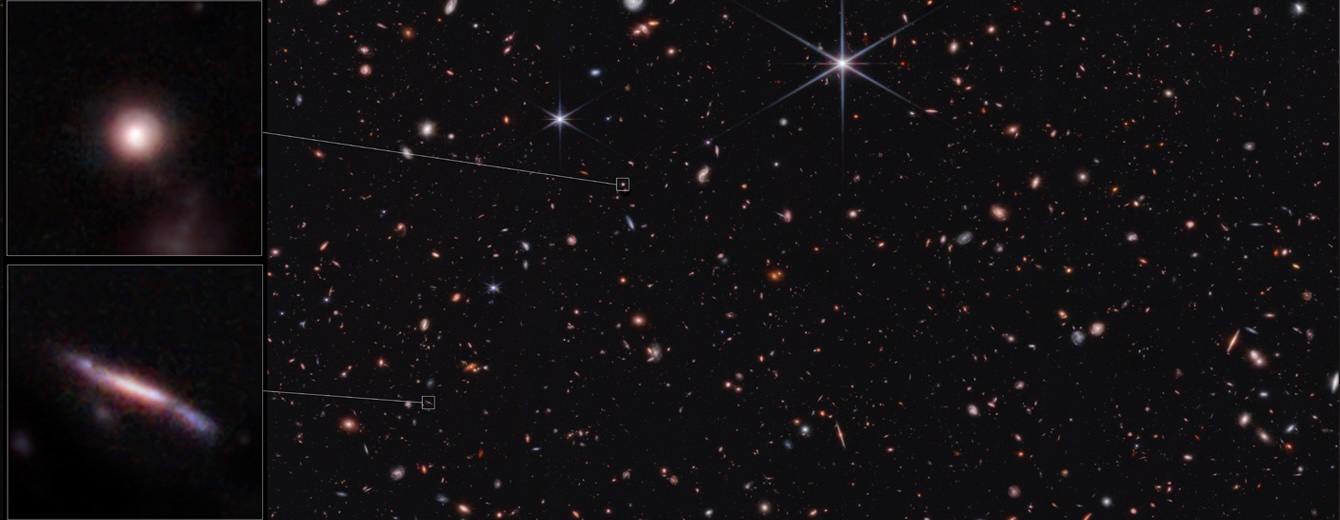Talk to anyone about galaxies and it often conjurs up images of spiral or elliptical galaxie. Thanks to a survey by the James Webb Space Telescope it seems the early Universe was full of galaxies of different shapes. In the first 6 billion years up to 80% of the galaxies were flat, surfboard like. But that’s not it, there were others like pool noodles too, yet why they looked so different back then is a mystery.
Galaxies were first identified back in the 17th Century by French astronomer Charles Messier. He was a comet hunter who identified a number of fuzzy objects which he realised were not comets. He catalogued them in his famous catalogue of deep sky objects but it wasn’t until Edwin Hubble measure the distances to some of them in the 1920’s that they were recognised as galaxies.

Analysing images from the JWST survey known as the Cosmic Evolution Early Release Science Survey, the team studied galaxies from a time when the universe was between 600 million and 6 billion years old. To their surprise they did not see the usual cosmic zoo of galaxies like spiral, elliptical and irregular galaxies. Instead they found that between 50 and 80% of the galaxies seem to be glattened in two dimensions.

Instead, the team found galaxies shaped like surfboards, pool noodles, frisbees and volleyballs. Among these new types, the surfboard shape was most common with the least common being the volleyball, sphere shaped galaxies. Interestingly too they foudn that the frisbee and noodle shaped galaxies became more common in the later era around 6 billion years.
The mass of the early galaxies seemed to be far less than the mass of galaxies we see today. It seems they had far less time to grow when compared to today’s galaxies which are far more massive. The team would have not been able to complete their work without the incredible sensitivity and resolution of the JWST.
The paper was authored by Viraj Pandya, a NASA Hubble Fellow at Columbia University. They went further to explore what category our own Milky Way galaxy would fall into if we could hop in a time machine and wind back time. They concluded it was likely to have been surfboard shaped galaxy, not too dissimilar to the spiral structure familiar to us today.
We have learned lots about galaxies over the years and images from Hubble has most certainly helped. The latest set of images from JWST have shown us that we still have lots to learn and as we delve deeper and deeper into space and further and further back into time we are only just starting to scratch the surface.
Source : Webb Shows Many Early Galaxies Looked Like Pool Noodles, Surfboards

